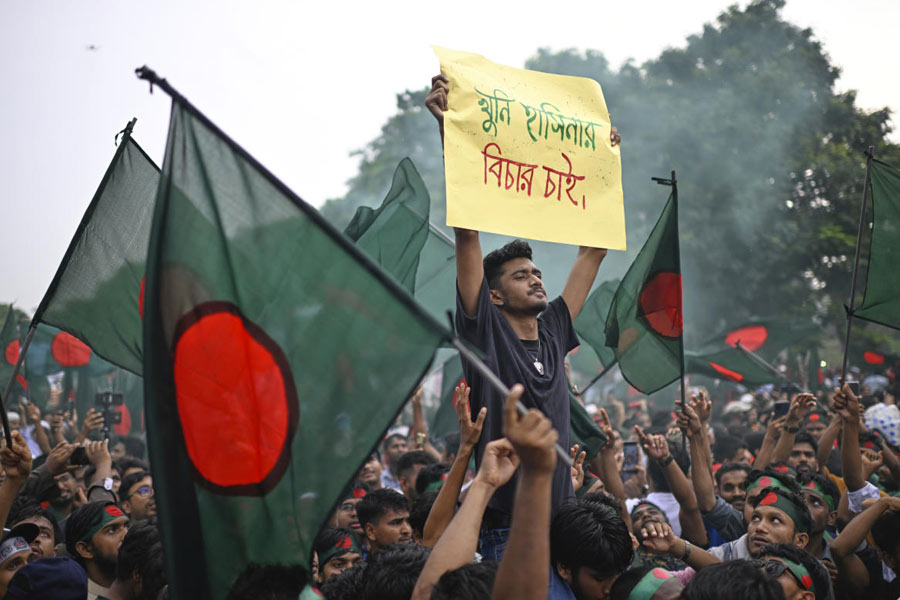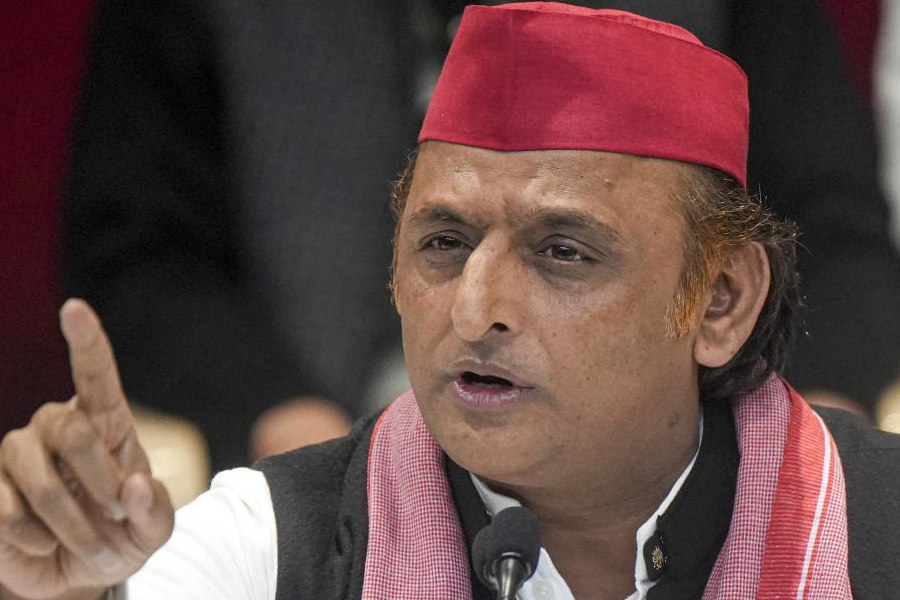 |
| Women spinning yarn. Picture by S.H. Patgiri |
The popularity of Assamese silk dates back to the Ahom era, when the products were sent as gifts to the Mughal court
Textile weaving was one fine art, which engrossed Assam in the ancient times. Apart from cotton textiles and a small quantity of woollens, Assam produced three kinds of silks, muga, paat and endi or eri. Assam textiles were in great demand in the adjoining countries and places like Tibet, Bhutan, Burma, Sikkim and Bengal. The sophisticated Mughals also prized Assamese silk textiles, which were either sent as gifts to the Mughal court or were exported for sale in Hindustan.
Assamese textiles were known for their fine quality, brightness of colour and durability. On the other hand, cotton goods were known for the bright natural colours, durability and the bold loom-embroidery designs, the motifs of which, though taken from nature and were given abstract and geometrical shapes. Printed textiles were not in vogue but very little of ?tie-dye? textiles were produced. Though in general, Assamese cotton textiles resembled Shan and Indonesian products yet.
Another special feature about Assamese textile weaving was that it was not confined to any particular community or artisan group. Textile weaving was a woman?s work and was produced in every home. To orthodox Hindus, members of other castes attached no stigma to weaving and rearing of silk worms. The Brahmins did not rear silkworm though their women too practised weaving.
Writing in the early 19th century, before the British annexed Assam, Hamilton has given an accurate account of the state of weaving in Assam. This industry was directly patronised by the state, so much so that queens established weaving schools in the palace, to teach the art to the daughters of the nobles. Widows and other female members of the household of executed prisoners were also employed by the state for spinning and weaving as a means of subsistence. The neo-Vaishnav movement of Sri Sankardev was an equally potent force in the development in the art of weaving, especially of figured cloth.
Though textile weaving dwindled like all other arts with the fall of the Ahom rule, it never became extinct as many other branches of Assamese art. It is still a living art as much in demand as it had been in the medieval period.
Assam has the most glorified heritage of textile production since ancient times. The distinctive Assamese textiles have also been documented in the Harsacharita of Banabhatta (7th century AD). The gifts sent by King Bhaskaravarman of Assam to Harsha of Kanauj included a variety of fine textiles. The most important variety of textile was in the shape of the white silk parasol known as the Abhoga, which was also a gift from Assam. It, however, was the family heirloom of the king of Assam or Kamarupa.
An important gift item typical of ancient Kamarupa textile industry was the linen cloth (Kshauma) that were bright like the rays of the autumn moon, and that were capable of undergoing washing treatment (Sauchakshama). The exact nature of these fabrics has not been made clear by previous commentators, although Bana has indicated sufficient hints for the purpose.
There seems be references of a special kind of scarf that were rolled up (Kundalikrita), not folded in the ordinary way, and hence required to be specially packed in round or cylindrical baskets of wicker-work (Vetra-Karanda) tastefully coloured on the outside. Bana referred to them as Bhangura Uttariya in a list of textiles specially being made on the occasion of Rajyasri?s marriage, which were so called because of the series of gathering folds along their length, this precluded folding and necessitated a different kind of packing.
In the beginning of Ahom rule also, the kings were taking interest in the progress of the textile art. King Suteopha (1268-1364 AD) engaged a thousand chutias and kacharis to rear worms for silks like paat, muga and mezankari. The Ahom dynasty introduced into Assam silks like muga and paat. During the early years of the Koch rule, textile industry had received state patronage in western Assam and Baranagar and was a great centre. But the Ahoms of eastern Assam were extremely proud of their textiles.
When King Naranarayana of the Koches sent the Ahom King Sukhampha or Khoraraja presents, including fine pieces of flowered silk saris of Barnagar, the Borgohain replying on behalf of the Ahom king told the Koch envoys to take back the saris, for in Assam the prostitutes used such dresses only. But there were other items of textiles among the gifts like gomcheng silk, chit or chintz and ghagari and other dress materials.
Vrindavani Vastra the marvel of Assamese textiles still glorifies the history of nimble Assamese textiles throughout the world. During the lifetime of Sri Sankardev, tapestry weaving developed under his supervision. At the request of the Koch king?s brother Chilarai, Sri Sankardev took up the project of tapestry weaving for which he engaged the weavers of Tantikuchi or Barpeta. Their leader was one Gopal, a master weaver. The tapestry was 120 cubits long and 60 cubits broad and it took about a year to finish the weaving.
Since the scroll depicted Krisna Lila scenes, it was known as the Vrindavani Vastra. The designs were woven with a large variety of coloured threads like red, white, black, yellow and green of the colours some were evidently mixed colours or Misravarna like Kach-Nila, Gaura-Syama, the above colours are still popular in Assamese loom embroidery work. The scenes depicted included those from Krishna?s birth in the prison of Kansa, to the vanquishing of Kansa, by Krishna. Each scene had its caption below it in beautifully embroidered alphabets. The tapestry was presented to Chilarai, the brother of the Koch king with due ceremony only a little before the expiry of Sri Sankardev. During his stay at Patbausi, the saint, used to go inspect the progress of the tapestry being woven at the Karkhana of Kenduguri, every day at Tanti Kuchi (Barpeta). The master weaver Gopal, later on became a disciple of Sri Sankardev through Madhavadeva and was given the name ? Mathuradas. Eventually, the Vrindavani Vastra was lost, though the last place of resort for the vastra was the Madhupur Satra, in Cooch Behar.
Sankardev, as early as in the 16th century, initiated the use of figured silk cloth as alter covers of which the Vrindavani Vastra is one of those classic examples. Though this unique piece of art today finds for itself a place in London?s Victoria and Albert Museum, the wonderful visual evidence and iconography pulls back its linkage to the obviously Vaishnavite (pertaining to the worship of Vishnu) and to the Assamese Vaishnavite ritual. The quality of silk, the stylisation of the drawing, and the blocks of curious angular in woven script, as yet not securely identified or translated, all point to an origin somewhere in the Northeast.










